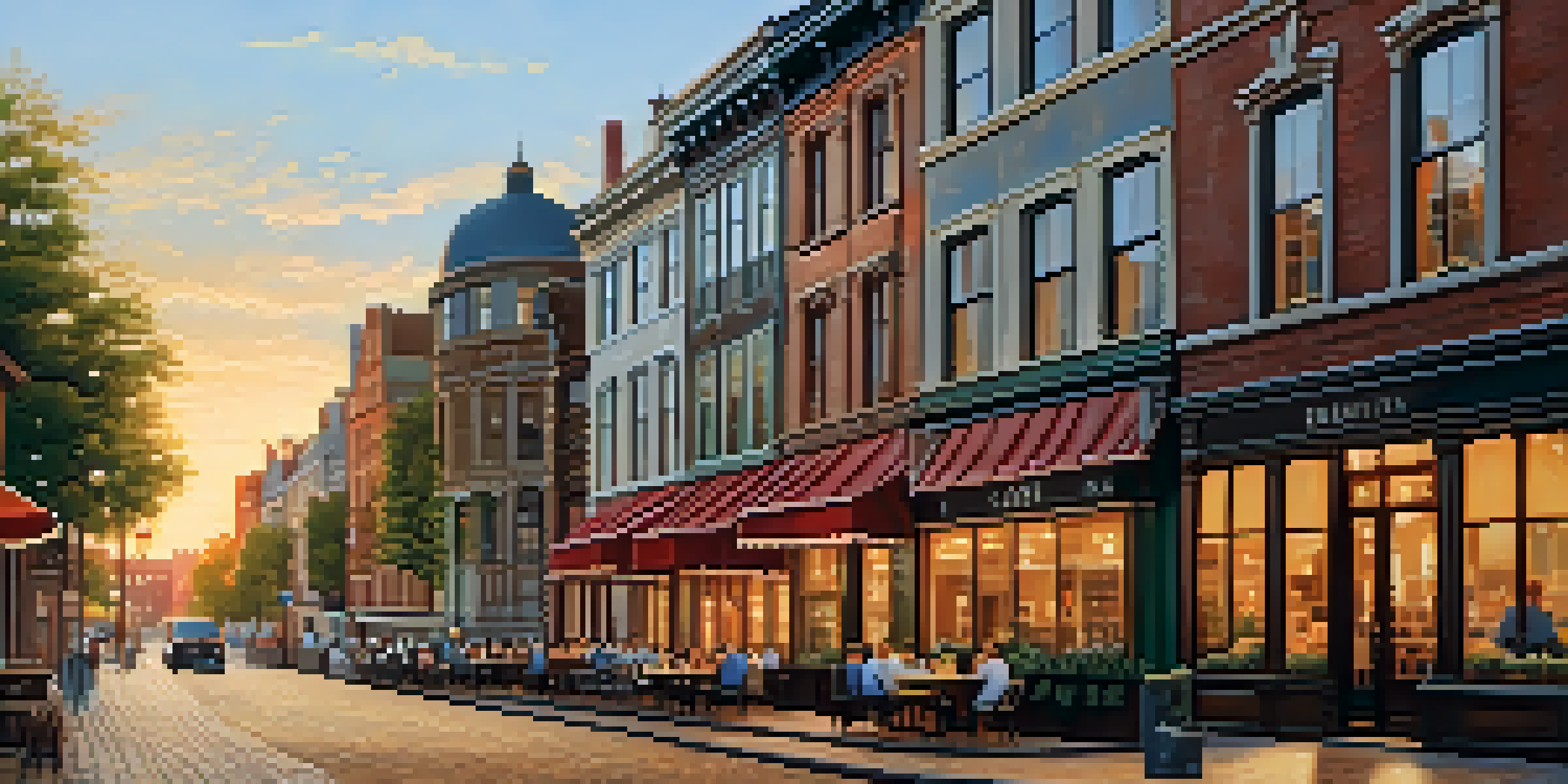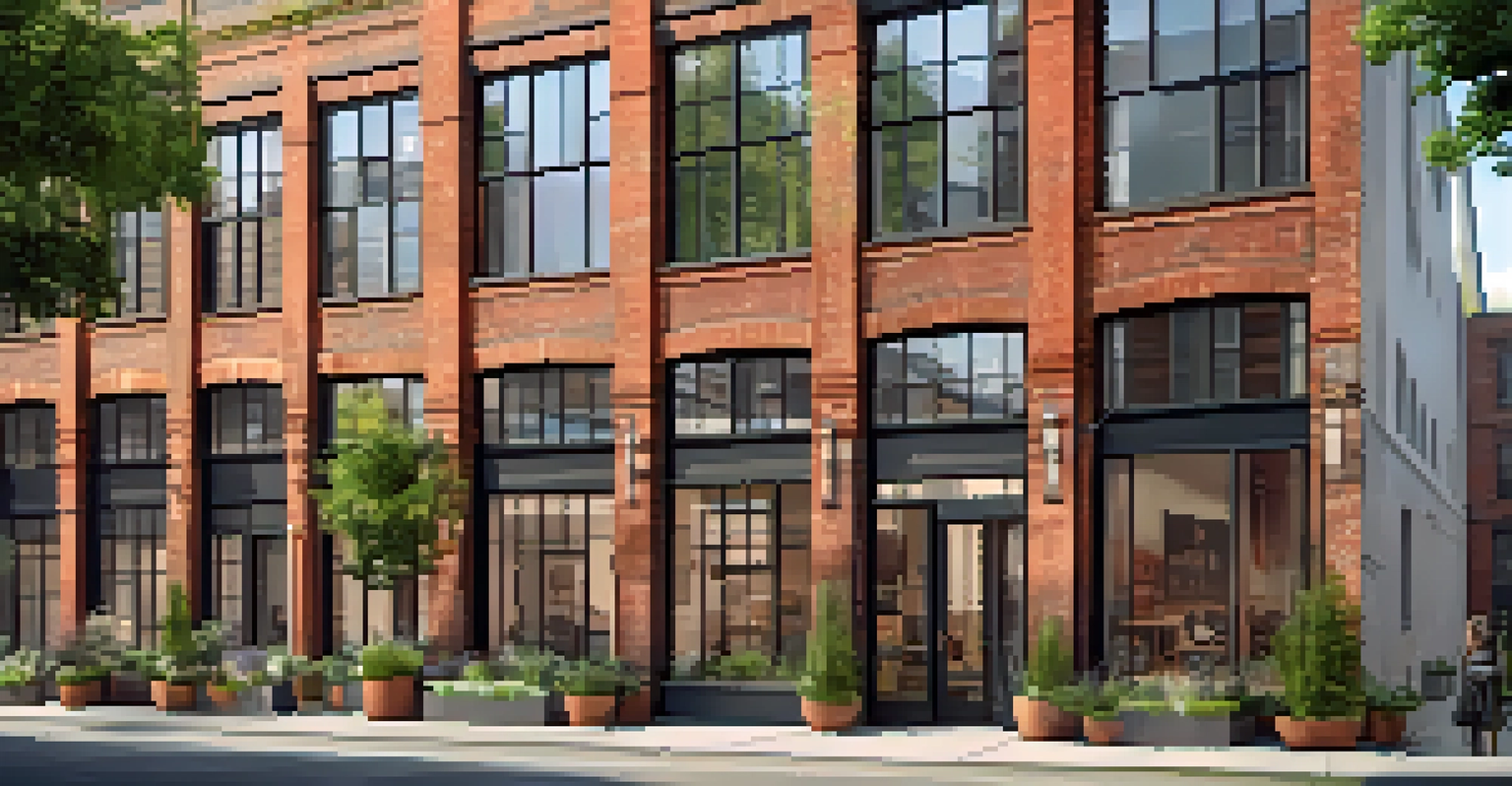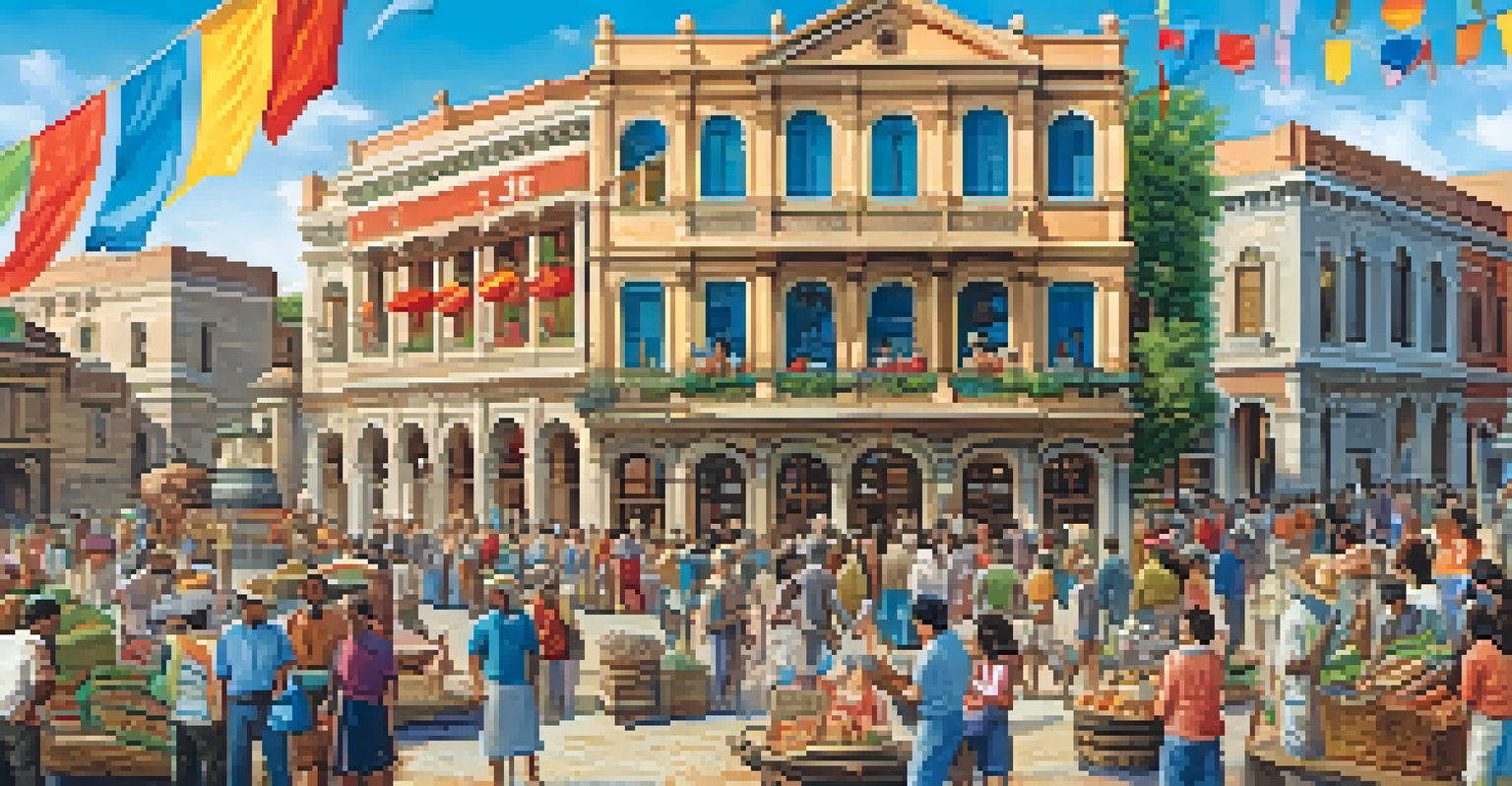The Role of Historic Architecture in Modern City Planning

Understanding Historic Architecture and Its Value
Historic architecture represents the cultural and historical essence of a city. It tells stories of the past, reflecting the values and aspirations of the people who built them. These structures often embody unique design elements that contribute to a city's character, making it more than just a collection of buildings.
We shape our buildings; thereafter, they shape us.
Moreover, historic buildings provide a sense of continuity in an ever-changing urban landscape. They serve as landmarks, guiding both residents and visitors through the city's narrative. By preserving and incorporating these structures, modern city planners can create a rich tapestry that honors the past while looking forward.
In essence, historic architecture is not merely about preservation; it’s about integration. When cities acknowledge their historical roots, they foster a deeper connection between people and their environment, creating spaces that resonate on multiple levels.
The Role of Historic Architecture in Urban Identity
Urban identity is shaped by various elements, with historic architecture playing a pivotal role. These buildings often become symbols of a city, representing its unique story and heritage. For instance, landmarks like the Eiffel Tower or the Colosseum are not just structures; they are integral to the identity of Paris and Rome, respectively.

When cities promote their historic architecture, they attract tourism, boosting local economies. Visitors are drawn to the charm of old buildings, eager to explore the history behind them. This influx can lead to revitalization efforts that benefit both the community and the urban landscape.
Historic Architecture Shapes Identity
Historic buildings serve as symbols of a city, reflecting its unique story and enhancing urban identity.
Furthermore, a strong urban identity fosters civic pride among residents. When people recognize and appreciate their city’s history, they are more likely to engage in community activities, enhancing social cohesion and collective responsibility.
Challenges of Integrating Historic Architecture in Modern Planning
While historic architecture can greatly enhance modern city planning, it also presents unique challenges. Balancing the preservation of old structures with the need for development requires careful consideration. For example, retrofitting a historic building to meet modern safety standards can be a complex task.
Architecture is the thoughtful making of space.
Additionally, there may be conflicts between preserving the old and accommodating new urban needs, such as housing and infrastructure. This can lead to debates among stakeholders, including city planners, architects, and local communities, about what should be prioritized.
Despite these challenges, successful integration is possible with thoughtful planning and collaboration. By engaging with communities and experts in both historic preservation and modern design, cities can find solutions that respect the past while addressing contemporary needs.
Adaptive Reuse: Breathing New Life into Old Buildings
One innovative approach to integrating historic architecture into modern city planning is adaptive reuse. This concept involves repurposing older buildings for new uses, allowing them to serve a functional purpose in today’s context. For example, an abandoned factory can be transformed into loft apartments or a vibrant cultural space.
Adaptive reuse not only preserves the architectural integrity of historic buildings but also reduces the environmental impact associated with new construction. By revitalizing existing structures, cities can minimize waste and conserve resources, aligning with sustainable development goals.
Adaptive Reuse Supports Sustainability
Repurposing old structures for modern use not only preserves history but also reduces environmental impact.
Moreover, adaptive reuse often contributes to urban revitalization. These projects can attract businesses, residents, and tourists, breathing new life into neighborhoods that may have been neglected.
Connecting Communities through Historic Preservation
Historic architecture has a unique ability to connect communities. It serves as a physical reminder of a city’s shared past, fostering a sense of belonging and continuity among residents. When communities actively engage in the preservation of their historic buildings, they cultivate a stronger local identity.
Moreover, preservation efforts can unite diverse groups around a common goal. Community members often come together to advocate for the protection of their architectural heritage, leading to collaborative projects and initiatives that strengthen social ties.
In this way, historic preservation becomes a catalyst for community engagement. It empowers residents to take pride in their surroundings, encouraging them to participate in local events and initiatives that celebrate their history.
The Economic Benefits of Historic Architecture
Incorporating historic architecture into modern city planning can yield significant economic benefits. Historic districts often attract businesses and tourists, contributing to a vibrant local economy. For instance, cities with well-preserved historic areas frequently see higher property values, as people are drawn to their charm and character.
Additionally, historic preservation can create jobs in construction, tourism, and hospitality sectors. Restoring and maintaining historic buildings requires skilled labor, which can stimulate local employment opportunities.
Economic Gains from Preservation
Integrating historic architecture boosts local economies by attracting tourism and increasing property values.
Moreover, the economic impact extends beyond direct benefits. Communities that prioritize historic architecture often experience increased investment, as businesses and developers recognize the appeal of well-preserved neighborhoods.
The Future of Historic Architecture in Urban Planning
As cities continue to evolve, the future of historic architecture in urban planning looks promising. There is a growing recognition of the importance of preserving cultural heritage in the face of rapid development. Many city planners are now prioritizing the integration of historic buildings into new projects, understanding their value in shaping urban landscapes.
Innovative technologies are also playing a role in preservation efforts. Tools like 3D scanning and digital modeling allow for more accurate restorations and adaptive reuse projects, ensuring that historic elements can be maintained while meeting modern needs.

Ultimately, the future will likely see a harmonious blend of old and new, where cities become living museums that showcase their history while embracing innovation. This balance will be key in creating vibrant, sustainable urban environments that honor their past.